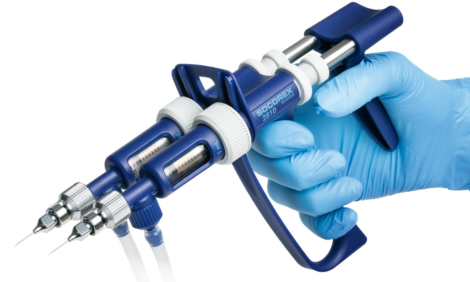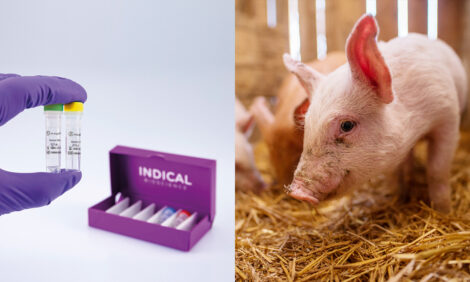



Gilt Management
Gilt management from selection to puberty is the topic of this practical guide from BPEX (Action for Productivity No. 27).Good management and selection of gilts is fundamental for maintaining a productive herd. At any time, 20 to 25 per cent of production should be from gilts. typical 45 per cent replacement rate means that nearly half the herd will have been replaced during the year. Performance from, and management of, this parity therefore, has a large impact on overall productivity and profitability.
It is especially important to ensure that there are sufficient gilts available to serve in the correct condition, at the required time. This enables the planned culling of old or less productive sows and maintenance of the target herd parity profile. The most productive established herds, e.g. older than three years, have stable parity structures with a high proportion of sows in parities 3 to 5, indicating the ability to retain young sows in the herd.
Targets
- Maintain a gilt pool, from 90 kg to service, of at least the equivalent of 12 per cent of the target herd size
- Maximise the number of gilts achieving puberty, and
- Manage the culling policy to maintain an optimum parity profile.
Management Guidelines
Maiden gilts


Emerging evidence suggests that the environment in which a gilt is reared during her suckling, nursery and finishing stages, as well as during her period as a maiden gilt, can have an impact on her lifetime performance.
Aim to provide an environment that:
- supports and maintains healthy gilts
- does not expose gilts to mycotoxins, and
- does not compromise growth
Isolation and acclimatisation
- Place purchased gilts in an isolation facility prior to entry onto the main unit
- Develop an acclimatisation and vaccination programme in conjunction with your veterinarian to ensure gilts, both homebred and purchased, aren’t challenged on entering the sow herd
- The period gilts are kept in isolation will vary, so the following management procedures may occur during this time, or once the gilts have entered the main unit
Stimulation of puberty
Farrowing index, also referred to as litters/sow/year, tells us the average number of times sows farrow in a year. Puberty is a critical period that should be proactively managed and recorded. Important factors implicated with a gilt’s ability to achieve puberty include:
Age: The modern gilt is leaner than previous generations and tends to reach puberty later. It is important not to expose prepubertal gilts to mature boars, as they become habituated to the boar stimulus and subsequently have an extended period to puberty. Start boar stimulation when the youngest gilt in the group is 180 days of age.
Space: Space allowance should be at least 1.5 square metres and preferably two square metres per gilt.
Air quality: Good with little evidence of ammonia.
Light: Provide 14 to 16 hours of good quality light (at least 50 lux).
Boar stimulation: The table shows the different degrees of boar contact typically provided. The boar should be at least 10 months old and express a high libido. Using boars in rotation will increase the impact of boar contact.
- For best results combine moving, mixing and initiation of boar contact simultaneously, using gilts at least 180 days of age
- Check for oestrus at least once a day with a boar
- Mark pubertal gilts and record date of heats; the group will often show a synchronised oestrus
- Handle and interact with gilts in a quiet and considerate manner

Options for boar contact
Full contact, irrespective of whether housed adjacent or separate from the gilts, is essential to optimise the effectiveness of the boar stimuli. Discuss the pros and cons of running a vasectomised boar with the gilts with your vet.
| Type of contact | Frequency | Time | Efficacy (where 1 is good and 4 is poor) |
|---|---|---|---|
| Full | Constant | Constant | 1 |
| Full | Twice a day | At least 10 mins | 1 |
| Full | Once a day | At least 20 mins | 2 |
| Adjacent pen | All day | Constant | 3 |
| Aerial, vocal, visual | All day | Constant | 4 (no stimulation) |
Recommended management at puberty

- Record pubertal gilts’ ID using existing tag/spray mark
- Change spray marker colour every week, for a period of three weeks
- Enter number of gilts available into projected service week to assist with culling decisions
- Mix into weekly groups if possible to simplify their feeding programme
- Distribute projected service dates across paddocks where unsupervised natural service is used
- Identify non-cycling gilts; develop a standard operating procedure for managing anoestrous gilts and set a maximum age at service
- Where Regumate® is used, only select cycling gilts to receive it; Regumate® is not effective on pre-pubertal gilts
April 2010








